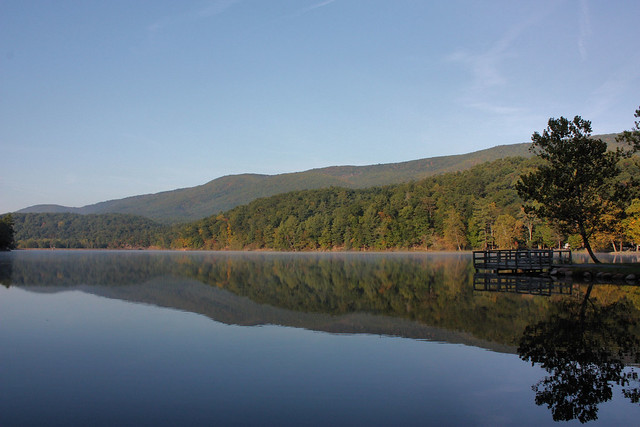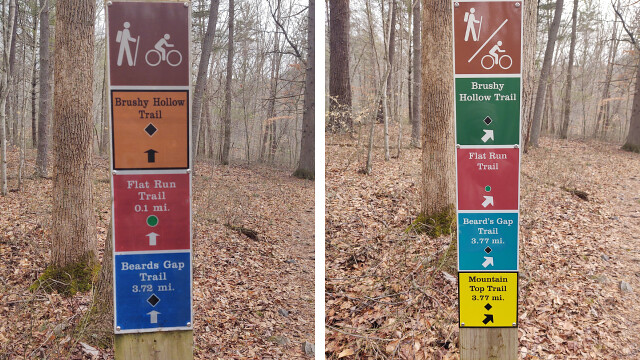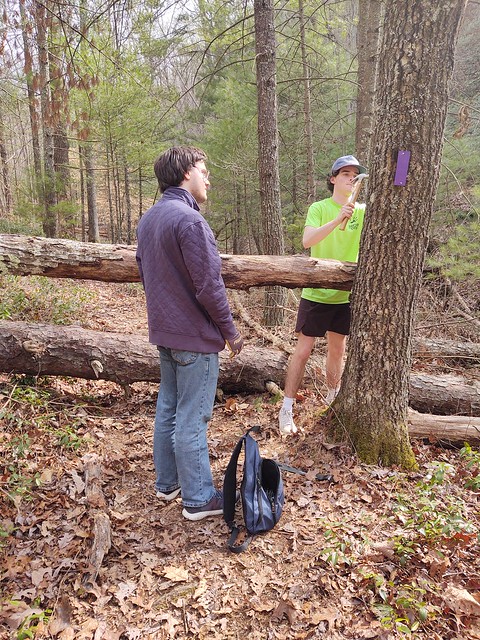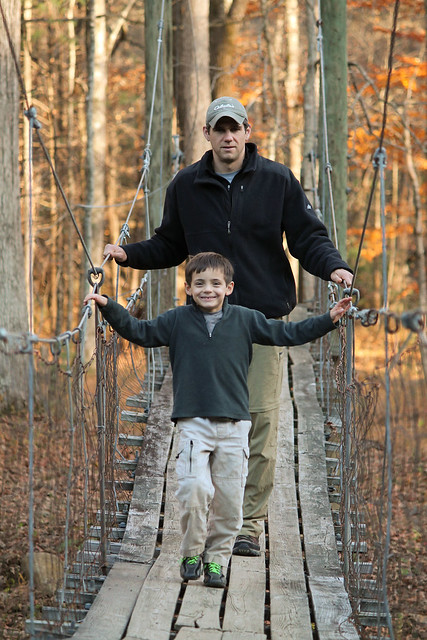Read Our Blogs
Long-awaited trail improvements coming to Douthat State Park

Douthat Lake
Douthat State Park has been a haven for adventure seekers and nature lovers for nearly 90 years. With its breathtaking mountain scenery, a pristine 50-acre lake and more than 40 miles of hiking trails, it’s easy to understand why.
The park was constructed by the Civilian Conservation Corps (CCC) between 1933 and 1942, and many of their original structures are still standing today. You can sleep in CCC cabins and even hike original CCC trails. In fact, the majority of Douthat’s 43-mile trail system is original to the park.
As you can imagine, buildings and trails from the ‘30s and ‘40s require some upkeep to ensure their longevity. The cabins are undergoing significant renovations that are scheduled to wrap up this spring (read about the completion of phase 1 here). As for the trails, park staff and volunteers perform regular maintenance, including clearing debris, fixing erosion problems and trimming overgrowth.
However, one aspect of the trail system that hasn’t received major updates in several decades is the signage. Years of intermittent updates to replace damaged signs have left the park with a mix of signs, some of which are old and hard to read.
So, the park has started re-blazing every trail and replacing each junction sign. With 25 trails totaling 43 miles, this is a gradual process that requires a lot of hiking.
Keep reading to learn more about the updates and for information about navigating the trails during this project.
What’s happening?

Brushy Hollow sign before (L) and after (R)
If you’re a longtime Douthat explorer, one of the most noticeable changes you’re going to see is new blaze colors. Originally, the park had six different blaze colors for all 43 miles of trail: blue, red, orange, white, yellow and gold. Now, there will be a different color for each of the 25 trails.
In addition to re-blazing the trails, all junction signs are being replaced. This is the more intensive portion of the project because all the new posts must be carried to each location along the 25 trails.

Installing a new trail junction
With support from a Christopher Newport University alternative spring break group, the park has made significant progress. In March, the group helped install 14 posts for junctions that are 6-by-6-inch-by-8-foot, two vertical trail identifiers that are 4-by-4-inch and 22 trail junction signs were installed or replaced. They also helped change the blazes on eight of the 25 trails.
The remaining work, replacing blazes on 33 miles of trails and 17 junction signs, will be performed by Volunteer Coordinator and Natural Resource Specialist Beth Mason and other park staff. The project is expected to wrap up later this year.

Replacing blazes
How to navigate the trails now.
Anytime you plan on exploring a Virginia state park, we recommend downloading Avenza Maps. This free app gives you access to geo-referenced PDF maps that will show your exact position on a trail even if you don’t have service. Learn more about Avenza Maps here.
Having Avenza Maps will be very beneficial while hiking Douthat during the trail updates project. Over the next few months, the blaze colors may not match the junction signs or the park’s paper maps.
Since cell phone service and Wi-Fi are limited at Douthat, it’s important to download Avenza Maps, create an account and download the Douthat map before you get to the park.
Things to remember.

Hiking at Douthat State Park
As you hit the trails, don’t forget to follow the 7 Leave No Trace Principles. They were developed by the Leave No Trace Center for Outdoor Ethics to help reduce the environmental impact of activities, such as hiking, camping and backpacking. Here’s how you can be a responsible park user:
- Plan ahead and prepare: Proper planning helps minimize resource damage and avoid potential accidents. Research the area you'll be visiting, including regulations, weather conditions and any special considerations. Make sure you have the necessary gear, including maps, adequate clothing, food and water.
- Travel and camp on durable surfaces: Stick to established trails and camp in designated campsites to avoid damaging fragile vegetation and soil.
- Dispose of waste properly: Leave no trace by carrying out all of your trash, including food wrappers, bottles, and any other waste. Dispose of it properly in designated receptacles.
- Leave what you find: Leave natural and cultural artifacts undisturbed for others to enjoy and to preserve the integrity of the environment. Resist the temptation to collect rocks, plants or other items as souvenirs. Take only photographs and memories and leave everything else as you found it.
- Minimize campfire impacts: Follow regulations and guidelines regarding campfires and, whenever possible, use a lightweight camp stove for cooking instead. If campfires are allowed and you choose to build one, use established fire rings or fire pans and keep the fire small. Completely extinguish the fire before leaving by drowning it with water and stirring the ashes until cold to the touch.
- Respect wildlife: Observe wildlife from a safe distance and don’t feed or approach them. Feeding wild animals can disrupt their natural behaviors and create dependence on human food, leading to potentially dangerous encounters. Store food securely to prevent wildlife from accessing it and keep pets under control to minimize their impact on wildlife.
- Be considerate of other visitors: Respect other outdoor enthusiasts by being courteous on the trail and at campsites. Keep noise levels down to avoid disturbing others, especially in the early morning and late evening. Yield to others on the trail, and remember bicyclists yield to hikers and horses, and hikers yield to horses.
To learn more about the 7 Leave No Trace Principles, click here.
If you have any questions about the trail updates project, please contact the park at 540-862-8100 or douthat@dcr.virginia.gov.
To learn more about hiking at Douthat and to start planning your trip, go to virginiastateparks.gov/douthat.
If you have read the article and have a question, please email nancy.heltman@dcr.virginia.gov.














